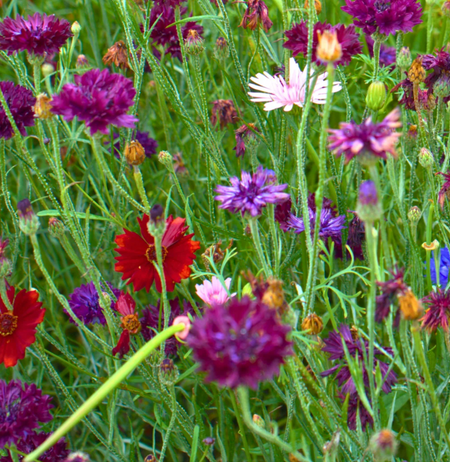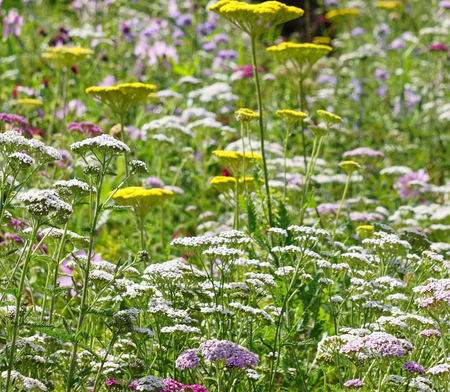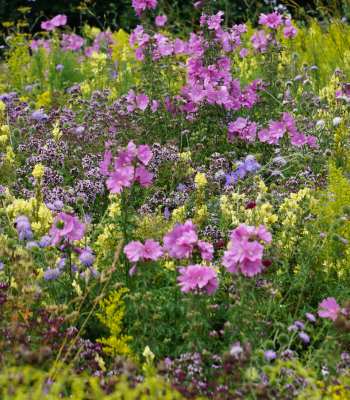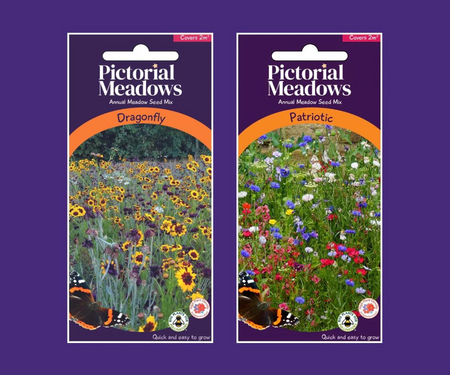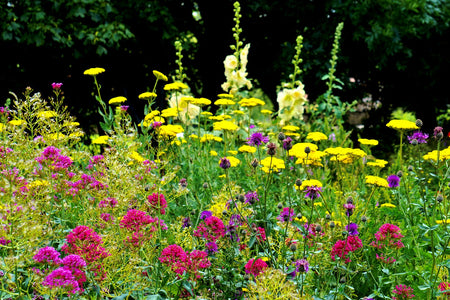Creating an annual wildflower meadow is a rewarding and straightforward process, ideal for both beginners and experienced gardeners. By following a clear, month-by-month approach, you can ensure a thriving and visually stunning wildflower meadow that supports biodiversity and enhances your landscape. Here’s what to do throughout the year.
 The 'Classic' Annual Wildflower Seed Mix
The 'Classic' Annual Wildflower Seed Mix
January to February: Planning and Preparation
● Choose an open, sunny location that receives sunlight for at least half of the day from spring through to summer. Avoid shady areas, as they lead to poor flowering and patchy growth.
● Assess soil conditions: The ground may be boggy in winter, but choose a site you know is usually fairly well-drained in summer. Annual wildflowers work on all soil fertility levels, but do best on normal to high fertility soils.
● Begin removing weeds, particularly perennial species with deep roots, as early as possible.
● If the ground is compacted, plan to cultivate it in early spring by shallowly turning the soil with a fork or rotavator.
 The 'Pastel' Annual Wildflower Seed Mix
The 'Pastel' Annual Wildflower Seed Mix
March to April: Ground Preparation and Sowing
● Monitor the soil for signs of warming, such as the rapid emergence and growth of weed and wildflower seedlings on bare ground. This is a key indicator that it’s time to sow.
● March: If the ground is workable, start creating a fine, crumbly seedbed by raking the soil after shallow cultivation. In milder areas of the country, you may sow annual wildflower seeds in March.
● April: This is the ideal month to sow annual wildflower seeds in most areas. Ensure all visible weeds, especially grasses, are removed.
● Sow Pictorial Meadows annual wildflower seeds at a rate of 3g per square metre.
● Mix the annual wildflower seeds with an inert bulking material like slightly damp sand or fine compost (five-parts bulking material to one-part seeds) for even distribution.
● Sow by hand in different directions for even coverage. Aim to cover the area repeatedly in two or three passes, in different directions, to help ensure even coverage.
● Firm the annual wildflower seeds into the soil using a roller, the back of a spade, or by gently treading over the area to ensure proper seed-to-soil contact, and firm soil for the plants to anchor into as they grow.
● Germination typically occurs within 7–10 days provided there is rain, with rapid growth following.
 The 'Cornfield' Annual Wildflower Seed Mix
The 'Cornfield' Annual Wildflower Seed Mix
May to June: Early Flowering and Care
● Enjoy the early flowering species as the meadow starts to bloom.
● Monitor the annual wildflower meadow for invasive weeds and hand-pull any that appear. The earlier you do this, the better.
● Avoid mowing or excessively trampling young wildflower seedlings.
● If dry weather persists, a thorough soak with a hose or sprinkler once or twice a week will encourage germination and help support plant establishment. It’s better to water deeply and do it less often, than to water shallowly and frequently. Do not over-water, as this will cause the wildflowers to grow tall and flop over.
 The 'Marshmallow' Annual Wildflower Seed Mix
The 'Marshmallow' Annual Wildflower Seed Mix
July to August: Peak Flowering and Enjoyment
● The annual wildflower meadow should be in full bloom, with successively taller flowering species masking the fading seedheads of those that went before, as the season progresses.
● Avoid heavy maintenance – just enjoy the vibrant display and the pollinators it attracts.
● If desired, collect some seeds from spent wildflowers to sow in other areas.
 The 'Pixie' Annual Wildflower Seed Mix
The 'Pixie' Annual Wildflower Seed Mix
September to October: Late Season Flowering
● Annual wildflower meadows will continue flowering right up until the frosts, and sometimes a bit beyond that!
● Allow the annual wildflower meadow to stand over winter if possible, providing seeds for birds and shelter for insects.
 The 'Patriotic' Annual Wildflower Seed Mix
The 'Patriotic' Annual Wildflower Seed Mix
November to December: End-of-Season Management, Rest and Observation
● Before cutting the annual wildflower meadow down, review the success of the meadow and the suitability of the site, so this can inform if you make any changes for next year.
● Once flowering is over, cut the annual wildflower meadow down and leave cuttings on the surface as mulch or remove them for composting.
● If left standing, observe how wildlife interacts with the wildflower seed heads and hollow stems.
 The 'Candy' Annual Wildflower Seed Mix
The 'Candy' Annual Wildflower Seed Mix
There may be some re-seeding of certain species the following spring, which can give a limited flowering display. However, to get a full pictorial wildflower display, you should freshly prepare the area again by re-cultivating the ground and re-sowing the following spring. After three or four years on the same site, we suggest converting to a perennial wildflower meadow using our perennial wildflower seed mixes or perennial wildflower turf and then creating a fresh annual wildflower meadow somewhere new.
Discover Pictorial Meadows’ Vibrant Range of Annual Wildflower Seed Mixes
Expert Advice
At Pictorial Meadows, we’re here to assist you every step of the way. Visit our Meadows Advice Centre for tips and advice, get in touch with product queries or sign up to our newsletter to enjoy tips, news and offers.

